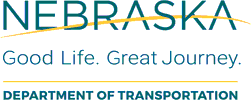Nebraska Local Technical Assistance Program

Nebraska Department of Transportation: Research Reports
Date of this Version
12-2017
Document Type
Article
Citation
Sharma, A., Ahsani, V., and Rawat, S. (2017). Evaluation of Opportunities and Challenges of Using INRIX Data for Real-Time Performance Monitoring and Historical Trend Assessment. NDOT Research Report SPR-P1(14) M007.
Abstract
In recent years there has been a growing desire for the use of probe vehicle technology for congestion detection and general infrastructure performance assessment. Unlike costly traditional data collection by loop detectors, wide-area detection using probe-sourced traffic data is significantly different in terms of measurement technique, pricing, coverage, etc. This affects how the new technology is applied and used to solve current traffic problems such as traffic incident management and roadway performance assessment. This report summarizes the experiences and lessons learned while using probe data for traffic operations and safety management in the state of Nebraska and makes recommendations for opportunities to maximize the use of probe data in light of its limitations. A detailed analysis of performance monitoring and historical trend analysis, including identification of the top 10 congested segments, congestion per mile across metro areas, congested hour(s) during summer and winter months, and yearly travel time reliability, for Interstate 80 segments in Nebraska were performed. Two main conclusions can be drawn from this study. First, there is almost always a speed bias between data streaming from probes and traditional infrastructure-mounted sensors. It is important to understand the factors that influence these biases and how to cope with them. Second, lack of confidence score 30 (real-time) probe data is a critical issue that should be considered precisely for incident detection, roadway performance assessment, travel time estimation, and other traffic analyses. Ultimately, the authors present several recommendations that will help transportation agencies gain the best value from their probe data.

